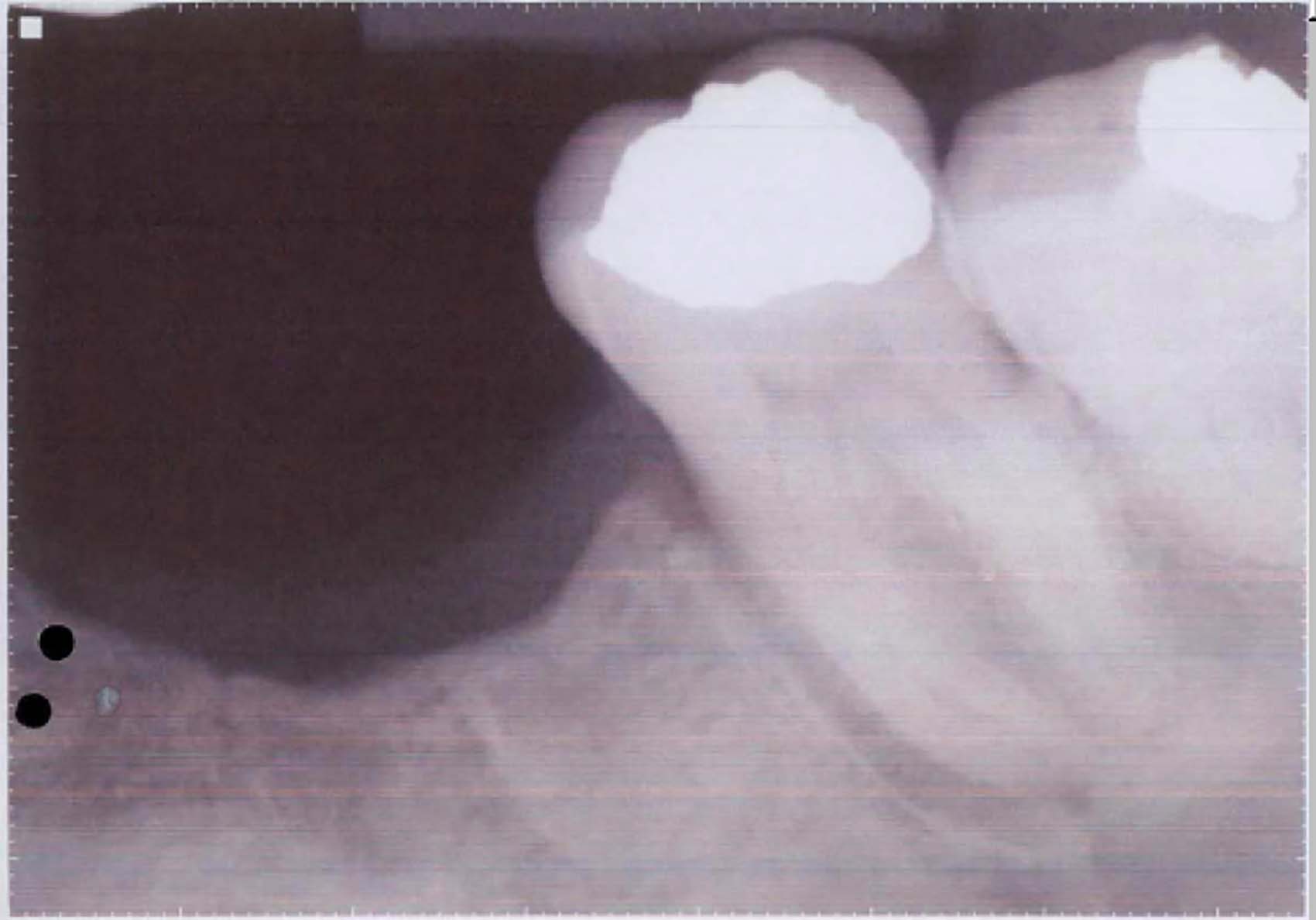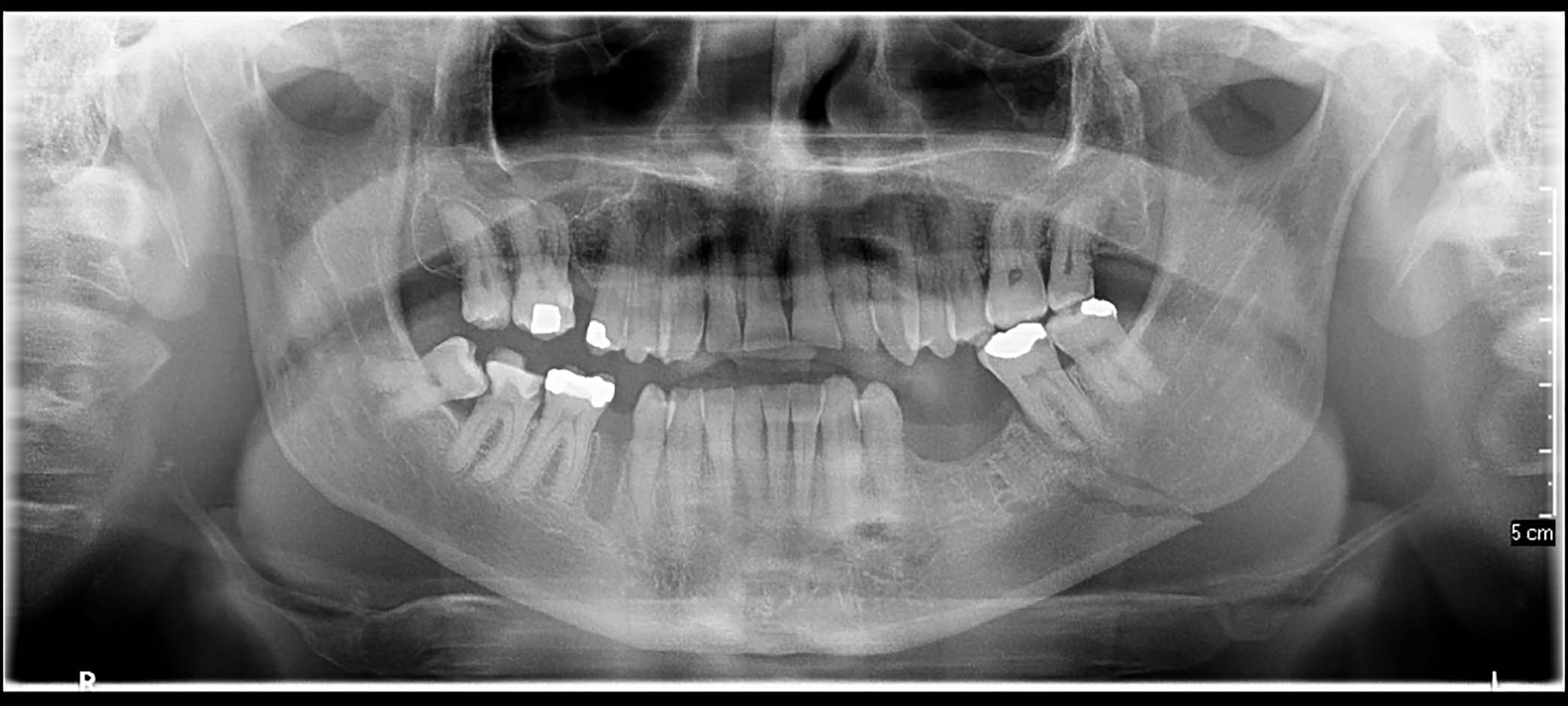Article
Case report: missed mandibular fracture
A 41-year-old patient attended the A&E department with pain and swelling following an attempted extraction of his lower left second molar by his dentist. The patient was being treated for a suspected combined periodontal-endodontic lesion on the mesial root of the LL7 (Figure 1). He presented to A&E in considerable pain. There was intra-oral swelling in the left posterior buccal region and extra-oral swelling and tenderness around the left border of the mandible. The LL7 was in supraocclusion, grade 1 mobile, tender to bite on, and there was a newly developed anterior open bite. An OPG taken in hospital confirmed a displaced left body of mandible fracture (Figure 2). The patient underwent an open reduction and internal fixation procedure under general anaesthetic to reduce the fracture and restore function.


Interestingly, the patient reported no history of trauma to the face or mechanical falls, and was unaware how a fracture could have occurred. Medically, he had no history of bone disease. Blood results including bone profile and parathyroid hormone tests came back within normal range, and there were no obvious bony deficits on the OPG. The attempted extraction is an unlikely cause, as cases of iatrogenic fractures are rare, with an incidence ranging from 0.0034% to 0.0075%,1 with third molars being the most commonly associated. This case highlights the difficulties general dental practitioners face when having to diagnose emergency patients in pain without an OPG machine accessible to them. There is perhaps a need for increased awareness of the signs and symptoms of mandibular fractures among dentists in primary care.

